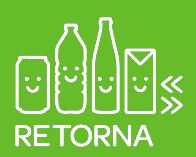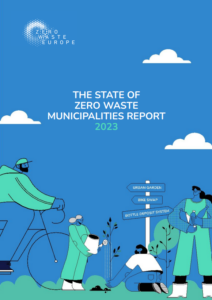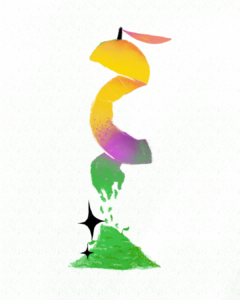Retorna – When waste has a value it stops being waste

When something has a negative value there is no incentive to deal with it. It is then left in the environment and we all suffer the consequences. Partly, a Zero Waste strategy consists in creating markets so that the products find a use at the end of their life.
Littering happens when food or beverage containers have a zero or negative value at the end of its use. Hence, the best way to avoid littering is to give waste a value. An empty can or bottle can end up in the bin, in the streets or recycled depending on whether the item has a value or not. Experience in Germany, Sweden, Norway, Denmark or the Netherlands shows that when the empty packaging is given some value (a deposit of 5 to 25 eurocents) the packaging will be recycled in more than 90% of the cases. Experience in countries without a deposit system shows that recycling happens in less than 50% of the cases. In those cases the waste ends up as litter or in a landfill or incinerator.
Retorna.org is the campaign in Spain to reintroduce a deposit system for beverages. This campaign takes place under the umbrella of the Zero Waste strategy in the country and wants to replace the current system in which the recycling of beverage packaging falls under 40% -due to the lack of incentives for people to do the right thing- to a deposit system that would allow to duplicate the recycling rates -which would reduce emissions-, increase the purity -and hence recyclability- of the materials, create more green jobs, radically reduce littering, reduce costs for municipalities and consumers and enforce the polluter pays principle. This alternative system -which was in use in Spain until the 1980s- and which obtains better results in any European country that has implemented it, it is being fiercely opposed by the industry. It is interesting to observe how the arguments used by the industry today in Spain are the same sort of arguments that were raised also by the industry in countries such as Germany before implementation. These fears proved to be exaggerated and the system has been very satisfactory allowing the industry to get back the materials.
To raise awareness about this topic the campaign is doing a tour around the country with a van that gives the opportunity to citizens to try the system. For every beverage container they bring they get 5 eurocents. This might look like a small amount of money but to the surprise of the organisers when the van set up the stand in the Rambla del Raval in Barcelona hundreds of people started queueing; during the two days the van stayed there the streets in downtown Barcelona were cleaner than ever and almost 50.000 containers were recovered with only one machine. The success was such that the van had to be moved away from the location because people started queuing during the night with containers they had collected elsewhere. The deposit system proved to be not only a good way to reduce litter and recycle more, but also a way for some people to generate get an income that in these times of economic hardship is becoming more and more difficult to do.
In a Zero Waste economy we should deal with any waste that has a negative value and redesign it so that we create positive incentive or change the way we perceive it so that its value starts being positive. For instance, the company Terra Cyle started paying to garbage pickers in Rio de Janeiro, Brasil, to collect chip bags -a priory non-recyclable-, suddenly chip bags disappeared from the landscape and chip bags automatically stopped being waste.
Zero Waste is about making waste visible so that we can identify the problem in the design or in the system. Giving waste a positive value so that it can generate markets is a way to reduce the amount of waste going to landfill or incineration.In a Zero Waste economy we should deal with any waste that has a negative value and redesign it so that we create positive incentive or change the way we perceive it so that its value starts being positive.


